小说的要素英文 ppt课件
- 格式:ppt
- 大小:681.00 KB
- 文档页数:25
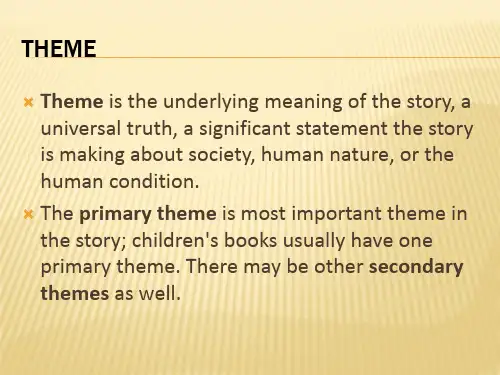

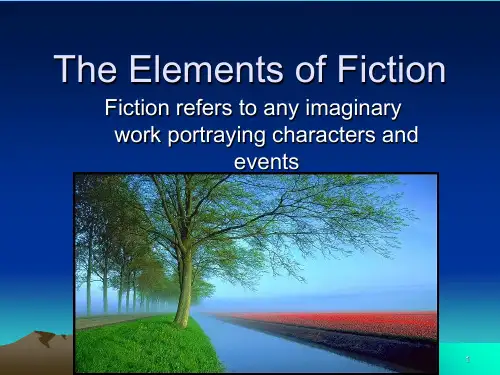
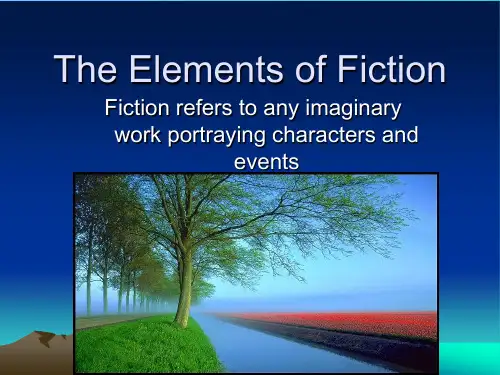
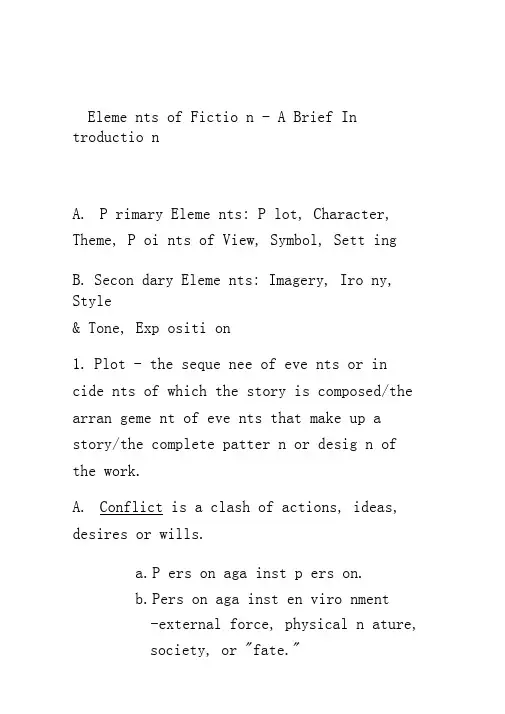
Eleme nts of Fictio n - A Brief In troductio nA.P rimary Eleme nts: P lot, Character, Theme, P oi nts of View, Symbol, Sett ingB.Secon dary Eleme nts: Imagery, Iro ny, Style& Tone, Exp ositi on1.Plot - the seque nee of eve nts or in cide nts of which the story is composed/the arran geme nt of eve nts that make up a story/the complete patter n or desig n of the work.A.Conflict is a clash of actions, ideas, desires or wills.a.P ers on aga inst p ers on.b.P ers on aga inst en viro nment-external force, physical n ature,society, or "fate."c.P erson aga instherself/himself - con flict withsome element in her/his ownnature; maybe physical, mental,emotional, or moral.d.Person against God-Greekmythology.B.Artistic Unity - essential to a good plot; nothing irrelevant that does not contribute to the total meaning; nothing that is there only for its own sake or its own excitement.C.Plot Manipulation and Fabulation - a good plot should not have any unjustified or unexpected turns or twists, no false leads, and no deliberate and misleading information; fabulation is the introduction of the fabulous or unrealistic or gothic elements in an otherwise realistic setting.D.Story Ending: In a Happy Ending the stereotypical expectation is that the protagonist must solve all the problems, defeat the villain, win the girl, and live happily everafter. Unfortunately, many real life situations have unhappy endings; for the writers of serious fiction, the unhappy endings are more likely to raise significant issues concerning life and living.E.Types of Plot:a.Tragedy(noble)edy(less great/noble)c.Romance(less great/noble)d.Satire (used to teach lesson or present a point of viewe of Plot:a.The structure of its actionsb.Order: 1st, 2nd, 3rd…c.T o create(The author uses actions as a painter uses paints to create)d.To achieve particular words to create certain effect2.CharacterA.Direct Presentation - author tells us straight out, by exposition or analysis, or through another character.B.Indirect Presentation - author shows us the character in action; the reader infers what a character is like from what she/he thinks, or says, or does. These are also called dramatized characters and they aregenerally consistent motivated (convincing), (lifelike).C.Character Types - a known by one or two character is complex and (in behavior), and plausibleFlat character is traits; amany-sided; a Stock character is a stereotyped character (a mad scientist, the absent-minded professor, the cruel mother-in-law); a Static character remains the same from the beginning of the plot to the end; and a Dynamic (developing) character undergoes permanent change. This change must be a. within the possibilities of the character; b. sufficiently motivated; and c. allowed sufficient time for change.D.Protagonist and Antagonist - the protagonist is the central character, sympathetic or unsympathetic. The forces working against her/him, whether persons, things, conventions of society, or traits of their own character, are the antagonists. 3.Theme - the controlling idea or central insight. It can be 1. a revelation of human character; 2. may be stated briefly or at great length; and 3. a theme is not the "moral" of the story.A. A theme must be expressible in the formof a statement - not "motherhood" but "Motherhood sometimes has more frustration than reward."B. A theme must be stated as ageneralization about life; names of characters or specific situations in theplot are not to be used when stating a theme.C. A theme must not be a generalization larger than is justified by the terms of the story.D. A theme is the central and unifying concept of the story. It must adhere to the following requirements: 1. It must account for all the major details of the story.2. It must not be contradicted by any detail of the story.3. It must not rely on supposed facts -facts not actually stated or clearly implied by the story.E.There is no one way of stating the themeof a story.F.Any statement that reduces a theme to some familiar saying, aphorism, or clich e should be avoided. Do not use "A stitch in time saves nine," "You can't judge a book by its cover, " "Fish and guests smell in three days," and so on.。
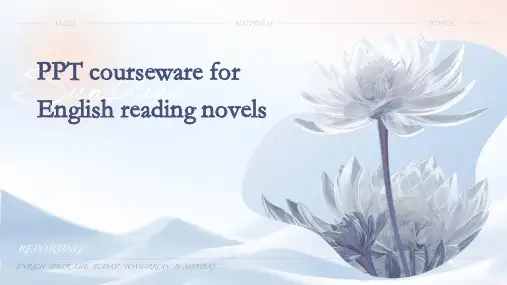
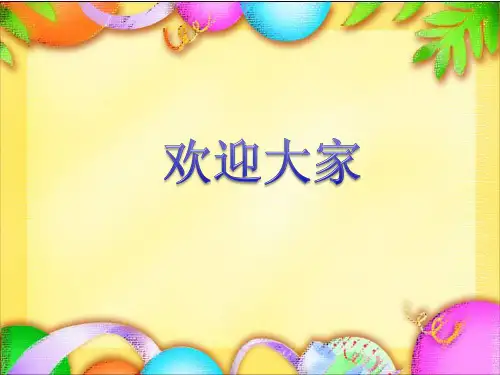
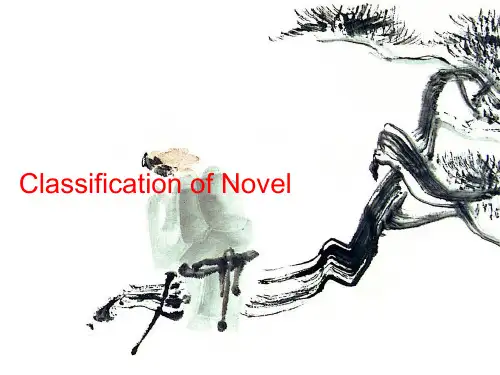
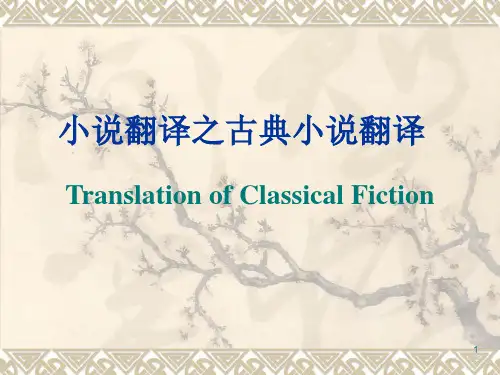
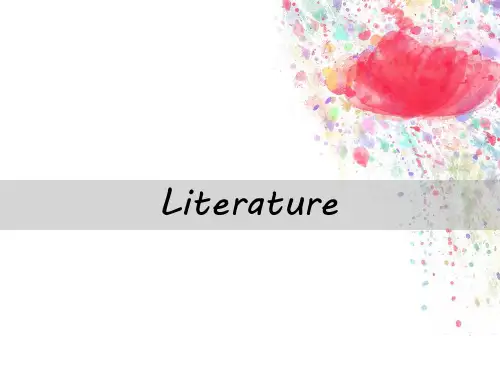
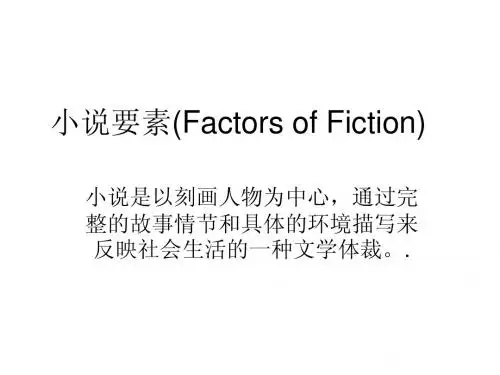
Elements of Fiction - A Brief IntroductionA. Primary Elements: Plot, Character, Theme, Points of View, Symbol, SettingB. Secondary Elements: Imagery, Irony, Style & Tone, Exposition1. Plot - the sequence of events or incidents of which the story is composed/the arrangement of events that make up a story/the complete pattern or design of the work.A. Conflict is a clash of actions, ideas, desires or wills.a.Person against person.b.P erson against environment- external force, physicalnature, society, or "fate."c.Person againstherself/himself - conflictwith some element inher/his own nature; maybephysical, mental, emotional,or moral.d.P erson against God-Greekmythology.B. Artistic Unity - essential to a good plot; nothing irrelevant that does not contribute to the total meaning; nothing that is there only for its own sake or its own excitement.C. Plot Manipulation and Fabulation - a good plot should not have any unjustified or unexpected turns or twists, no false leads, and no deliberate and misleading information; fabulation is the introduction of the fabulous or unrealistic or gothic elements in an otherwise realistic setting.D. Story Ending: In a Happy Ending thestereotypical expectation is that the protagonist must solve all the problems, defeat the villain, win the girl, and live happily everafter. Unfortunately, many real life situations have unhappy endings; for the writers of serious fiction, the unhappy endings are more likely to raise significant issues concerning life and living.E. Types of Plot:a. Tragedy(noble)b. Comedy(less great/noble)c. Romance(less great/noble)d. Satire (used to teach lesson or present a point of viewF. Use of Plot:a. The structure of its actionsb. Order: 1st, 2nd, 3rd…c. To create(The author uses actions as a painter uses paints to create)d. To achieve particular words to create certain effect2. CharacterA. Direct Presentation - author tells us straight out, by exposition or analysis, or through another character.B. Indirect Presentation - author shows us the character in action; the reader infers what a character is like from what she/he thinks, or says, or does. These are also called dramatized characters and they are generally consistent (in behavior), motivated (convincing), and plausible (lifelike).C. Character Types - a Flat character is known by one or two traits; a Round character is complex and many-sided; aStock character is a stereotyped character (a mad scientist, the absent-minded professor, the cruel mother-in-law); a Static character remains the same from the beginning of the plot to the end; and a Dynamic (developing) character undergoes permanent change. This change must be a. within the possibilities of the character; b. sufficiently motivated; and c. allowed sufficient time for change.D. Protagonist and Antagonist - the protagonist is the central character, sympathetic or unsympathetic. The forces working against her/him, whether persons, things, conventions of society, or traits of their own character, are the antagonists.3. Theme - the controlling idea or central insight. It can be 1. a revelation of human character; 2. may be stated briefly or at great length; and 3. a theme is not the "moral" of the story.A. A theme must be expressible in the form of a statement - not "motherhood" but "Motherhood sometimes has more frustration than reward."B. A theme must be stated as a generalization about life; names of characters or specific situations in the plot are not to be used when stating a theme.C. A theme must not be a generalization larger than is justified by the terms of the story.D. A theme is the central and unifying concept of the story. It must adhere to the following requirements:1. It must account for all the major details of the story.2. It must not be contradicted by any detail of the story.3. It must not rely on supposed facts - facts not actually stated or clearly implied by the story.E.There is no one way of stating the theme of a story.F. Any statement that reduces a theme to some familiar saying, aphorism, or clichéshould be avoided. Do not use "A stitch in time saves nine," "You can't judge a book by its cover, " "Fish and guests smell in three days," and so on.。